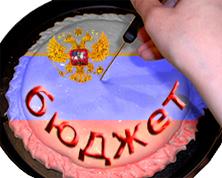Moody’s expects Russia’s GDP growth in 2017 by 1.5%
Peter Origin
 Shutterstock
Shutterstock
In 2017, Russia’s economy will grow by 1.5%, analysts predict Moody’s. Government experts believe that the domestic economy will show weak growth in the third and fourth quarter of this year. But the expected increase is too small, so the situation is evaluated as the beginning of a period of stagnation.
Moody’s predicts real GDP growth of Russia in 2017 by 1.5%. This year analysts expect a recession within 1%.
Growth of 1.5% is stagnation, believed by most experts. Analysts at the center of the HSE noted that the economy is “stuck at the bottom”. The Minister of economic development Alexei Ulyukayev, usually arguing with the conclusions of “the Tower”, agreed with this assessment, telling RBC that we have moved from recession to stagnation. Earlier he said that the HSE are wrong, since the “draw numbers decline by 1.5%”.
At the end of this year, the economic development Ministry has downgraded its GDP forecast from minus 0.2% to minus 0.5 to 0.7%, said recently the Director of the consolidated Department of macroeconomic forecasting Department Kirill Tremasov. The transition to economic growth is expected in the second half of the year. “The business cycle is likely passed the low point and turns up,” said the official.
The Minister of economic development said earlier that the Russian economy will grow slightly in 2016. However, it is difficult to assess whether the recorded growth in the third quarter or the end of a recession will shift the last three months of the year.
“I said that the fourth quarter — exactly. Third — maybe Yes, maybe no, with equal probability,” — said Ulyukayev.
Sberbank CIB analysts expect “significant growth compared to the same period last year in agriculture, moderate growth in industry and slow the rate of decline in construction activity”. They also do not exclude that the value added in trade (which includes wholesale and retail components) will also increase compared to the same period last year.
“In this case, GDP growth in the second half of 2016, compared to the same period last year is moderately positive. We reiterate our baseline scenario for GDP growth for this year, expecting a decrease of 0.3%,” — noted in Sberbank CIB.
President of Sberbank German Gref previously admitted that the second half of 2016, the GDP can grow.
“Despite the negative growth of the Russian economy in the first half of 2016, we see some signs of stabilization in the face of rising oil prices and the strengthening of the ruble, which allows to predict a positive GDP dynamics in the second half of 2016”, — he said.
While statistics looks quite promising. According to Rosstat, published on 9 September, the volume of Russia’s GDP for the second quarter of 2016 made in current prices 19,979 trillion rubles (38,541 trillion in the first half). The index of physical volume of GDP compared to the same period last year amounted to 99.4% compared to the first quarter of this year — 107%. Compared to the first half of 2015, GDP fell by 0.9%. These data coincided with the preliminary estimate of GDP dynamics.
Given the fact that in the first quarter GDP fell by 1.2% and the four quarters of last year, there was a drop of 2.9 to 4.5%, it is possible to speak about significant slowing of decline.
In the second quarter of this year, positive annual dynamics of value added (0.3 to 2%) was observed in agriculture, mining industry, manufacturing industry, production and distribution of electricity, gas and water, financial sector, real estate and utilities.
The largest decline was recorded in fishing and fish farming (minus 13.1 per cent) and construction (down 9.5 percent). Due to the reduction of budget expenditures, continued contraction in the sector public administration, military security; social insurance: in the first quarter was recorded at minus 1.8 percent, the second — minus 1.9%. The decline slowed in the trade (from 2.5% in the first quarter to 1.2% in the second) and hotels and restaurants (from 3.7 to 1.2%).
However, not all analysts hold optimistic views on the economy. In the forecast of the Analytical credit rating agencies (ACRA), released on September 12, it is assumed that the decline this year will be 1.5%. This means that the dynamics of sectoral indicators will worsen in the second half.
“Socio-economic statistics for January – July of 2016 shows that the recession is de facto ended. Current growth rates of the most important flows as seasonally adjusted, remain negative. In the last five months, falling mining, manufacturing, construction and other basic activities”, — stated in the message of an ACRE.
In their scenario, the recession will not end and next year GDP will decline by 0.1%. At the same time on the horizon five years, they expect all of the same stagnation, with economic growth not higher than 1.5% even with increased oil prices.








